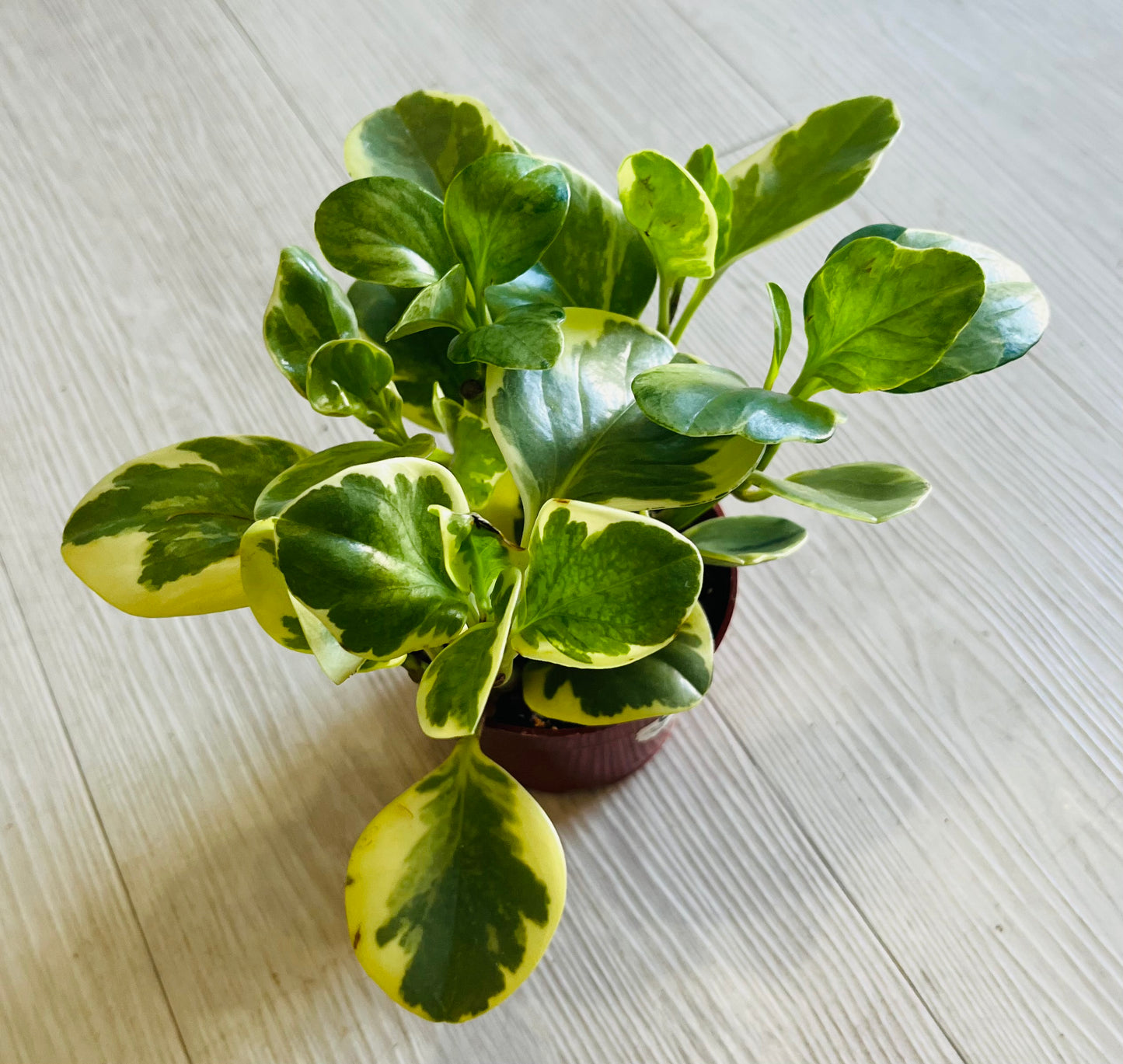SoCal Soul Plants & Gifts
Peperomia Variegated 4”
Peperomia Variegated 4”
Pickup available at SoCal Soul Store
Usually ready in 24 hours
Light:
• Bright, indirect light is ideal for Variegated Peperomia. While it can tolerate low light, too little can cause the colors to fade and may lead to leggy growth.
• Avoid direct sunlight, as it can scorch the leaves. A location near a north or east-facing window is often best.
Watering:
• Water when the top 1-2 inches of soil feel dry. Variegated Peperomias are susceptible to overwatering, so it’s important to let the soil dry out between waterings.
• Water thoroughly, allowing excess water to drain out of the pot. Ensure the pot has drainage holes to prevent standing water.
Humidity:
• Variegated Peperomias prefer average to higher humidity levels but can adapt to typical indoor conditions.
• If you notice browning leaf tips, increase humidity by misting the plant or placing it on a humidity tray.
Temperature:
• The ideal temperature range for Variegated Peperomia is between 65°F and 80°F
• Keep the plant away from cold drafts and avoid temperatures below 50°F
Soil:
• Use a well-draining potting mix. A cactus or succulent mix works well, or you can amend regular potting soil with perlite or sand to enhance drainage.
• Ensure the pot has drainage holes to prevent waterlogging.
Fertilizer:
• Fertilize during the growing season (spring and summer) with a balanced, water-soluble fertilizer diluted to half strength every 4-6 weeks.
• Avoid fertilizing in the fall and winter when the plant is dormant.
Pruning:
• Regularly remove any yellow or dead leaves to keep the plant healthy and encourage bushier growth.
• Pruning can help shape the plant and remove any leggy growth.
Repotting:
• Repot your Variegated Peperomia every 1-2 years or when it becomes root-bound. Choose a pot that is slightly larger than the current one to encourage healthy growth.
• Spring is the best time for repotting.
Pest Control:
• Variegated Peperomias are generally pest-resistant but can occasionally attract mealybugs, spider mites, or aphids.
• Regularly inspect the leaves for pests. If you notice any, treat them with insecticidal soap or neem oil.
Common Issues:
• Yellowing leaves: Often a sign of overwatering or poor drainage. Check the soil moisture and adjust your watering practices accordingly.
• Drooping or wilting leaves: Indicates underwatering. Water the plant, and it should perk up within a few hours.
• Browning leaf tips: Can be caused by low humidity or over-fertilization. Adjust humidity levels or reduce fertilizer usage as necessary.
Propagation:
• Variegated Peperomias can be propagated through leaf cuttings or stem cuttings. Take a healthy leaf or stem, allow it to callous for a few hours, and then place it in soil or water until roots develop.
General Tips:
• Rotate the plant every few weeks to encourage even growth and prevent it from leaning toward the light.
• Clean the leaves with a damp cloth occasionally to remove dust and improve photosynthesis.
Care Instructions
Care Instructions
Delivery only available in IL & MO
Delivery only available in IL & MO
Currently, shipping is only available to Illinois and Missouri addresses.
In-Store Pick Up
In-Store Pick Up
Free in-store pick-up is available during store hours. Orders are ready to go within 24-48 hours after your order is placed.
Additional Info
Additional Info
Each plant is unique; size, coloring, and shape fluctuate so your plant may be slightly different than the one pictured. However, you'll always receive a happy healthy plant hand-picked, and I won't give customers anything I wouldn't take home myself!




